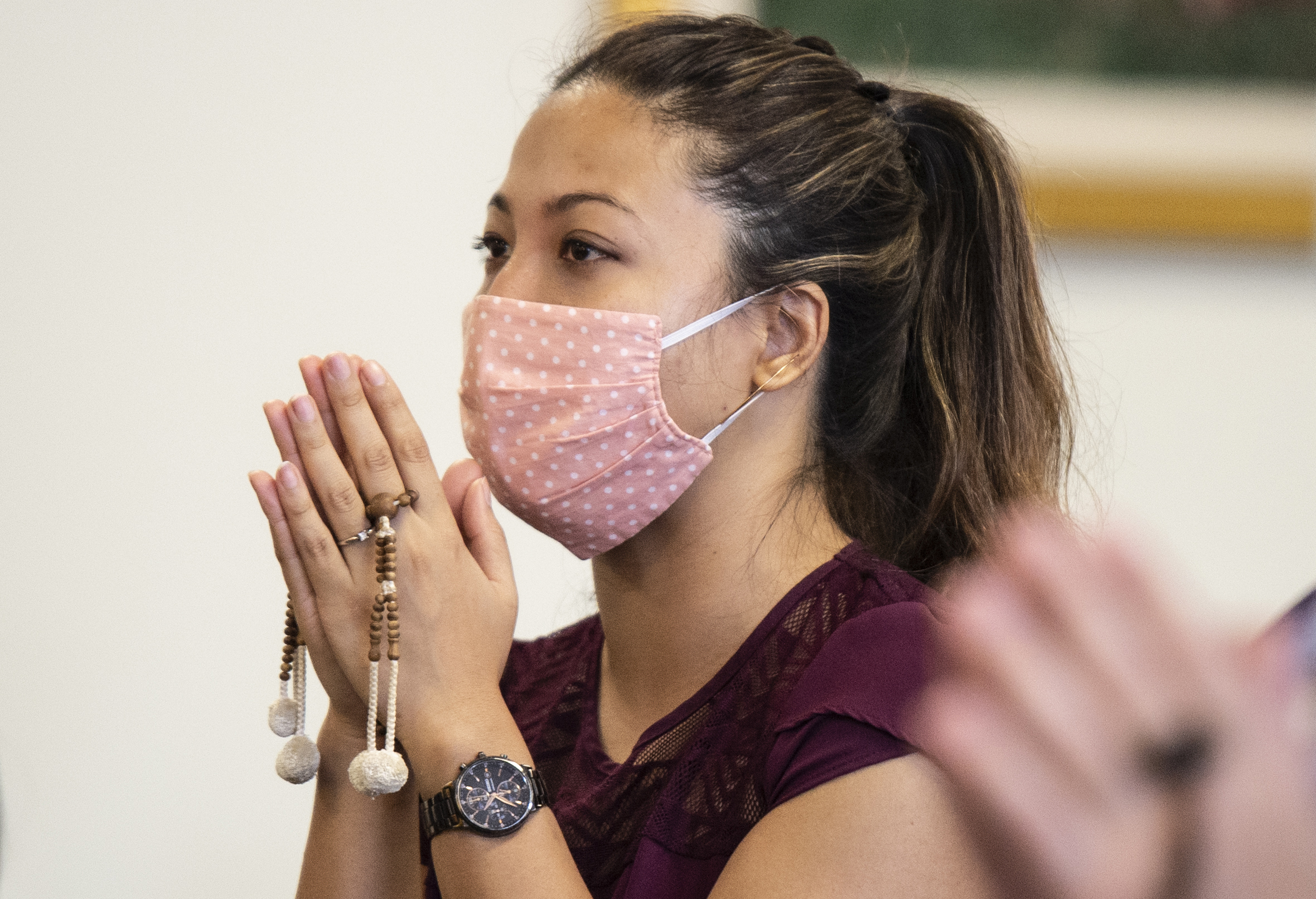After World War II, agricultural land reforms had stripped the Nichiren Shoshu priesthood of most of the farmland it once owned, leaving it on the verge of financial collapse. In November 1950, a local mayor prompted the priesthood to make their head temple, Taiseki-ji, a tourist site to generate revenue.
Second Soka Gakkai President Josei Toda was shocked to hear that such plans were underway. Turning the Gohonzon into a money-making attraction for tourists who had no faith in Nichiren Buddhism would be an affront to Nichiren’s teachings. He felt it imperative that the Gohonzon remain an object of faith and respect.
Vehemently opposed to the idea, he resolved to find another way and came up with the idea to hold regular pilgrimages. Two years later, starting in 1952, the Soka Gakkai implemented the plan, which continued for decades.
Despite most members being poor, they joyfully shouldered the responsibility to revive the head temple. For instance, even though they could make only modest monetary donations, each time they visited the temple grounds they brought pockets full of gravel to spread over the uneven dirt paths until, eventually, the paths were smoothly covered.
In 40 years, SGI members made a total of 70 million pilgrimages, and, due to members’ sincere donations, the head temple expanded from 41 acres to 956.[1] The Soka Gakkai also donated more than 300 temples throughout Japan.[2]
Using Religious Authority to Sow Confusion and Disunity
Instead of appreciating the Soka Gakkai’s support, however, many priests saw the growing lay organization as a threat to their authority.
In the early 1990s, they unilaterally and unreasonably raised pilgrimage fees. And they had begun secretly plotting to disband the Soka Gakkai, implementing a series of measures to undermine it and lure its members away to ally with the priesthood.
These plans included their abrupt banning, in July 1991, of Soka Gakkai pilgrimages. To visit the head temple, Soka Gakkai members now had to register with a local Nichiren Shoshu temple, in effect, transferring their membership from the Soka Gakkai to that temple. Exploiting the members’ seeking spirit and using religious authority to sow confusion and disunity, this scheme aimed to sever members’ ties with the Soka Gakkai.
On Nov. 28, 1991, the priests went so far as to excommunicate all Soka Gakkai members. Rather than damage the lay organization as they had hoped, however, this act freed members from the priests’ authoritarian grip. Since then, the Soka Gakkai has thrived and spread to 192 countries and territories.
Learning From Nichiren’s Writings
Though in the past, they themselves never promoted the idea of pilgrimages, the priests in recent decades have claimed that visiting the head temple is “fundamental” and “essential”[3] to one’s faith. But such claims contradict Nichiren’s admonitions, such as:
What is most important is that, by chanting Nam-myoho-renge-kyo alone, you can attain Buddhahood. It will no doubt depend on the strength of your faith. To have faith is the basis of Buddhism.[4]
Nichiren also explains the meaning of “place of practice,” as described in the Lotus Sutra. He clarifies that we do not have to go to a special place (such as the head temple) to carry out correct practice. He emphasizes instead that there is no special Buddha land apart from where we chant Nam-myoho-renge-kyo and carry out Buddhist practice. He says:
The place where the person upholds and honors the Lotus Sutra is the “place of practice.” … It is not that he leaves his present place and goes to some other place. The “place of practice” is the place where the living beings of the Ten Worlds[5] reside.[6]
We can experience all the benefits of faith by fully engaging in our daily Buddhist practice where we are now. We do not have to travel to distant or religious places. And, while in the past, SGI members visited the head temple, the place itself never brought them benefit. Rather—whether we make “pilgrimages” to our discussion meetings or to other SGI activities—benefits come from our resolve to seek a deeper understanding of Buddhism, to make causes to deepen our faith.
As we advance kosen-rufu, we may again encounter people of corrupt intent who, like the Nichiren Shoshu priests, will try to create doubt and disunity among our harmonious community of believers.
We each play a crucial role in ensuring that they never succeed and that the Soka Gakkai always practices in accord with Nichiren’s teaching. Our personal study of Nichiren’s writings and Ikeda Sensei’s guidance, our endeavors to share Buddhism and to win in our lives—all our daily efforts in faith are what will help us protect and expand our harmonious Soka community for generations to come.
—Prepared by the SGI-USA Study Department
References
- See https://www.worldtribune.org/article/vow-volume-30-chapter-6-61-70/. ↩︎
- The Untold History of the Fuji School, p. 194. ↩︎
- A Journey Within: Refuting Nichiren Shoshu’s Claims About Pilgrimage, p. 24. ↩︎
- The Real Aspect of the Gohonzon,” The Writings of Nichiren Daishonin, vol. 1, p. 832. ↩︎
- The Ten Worlds, from the standpoint of the Lotus Sutra, indicates ten potential states or conditions that an ordinary person can manifest or experience. ↩︎
- The Record of the Orally Transmitted Teachings, p. 192. ↩︎
You are reading {{ meterCount }} of {{ meterMax }} free premium articles

